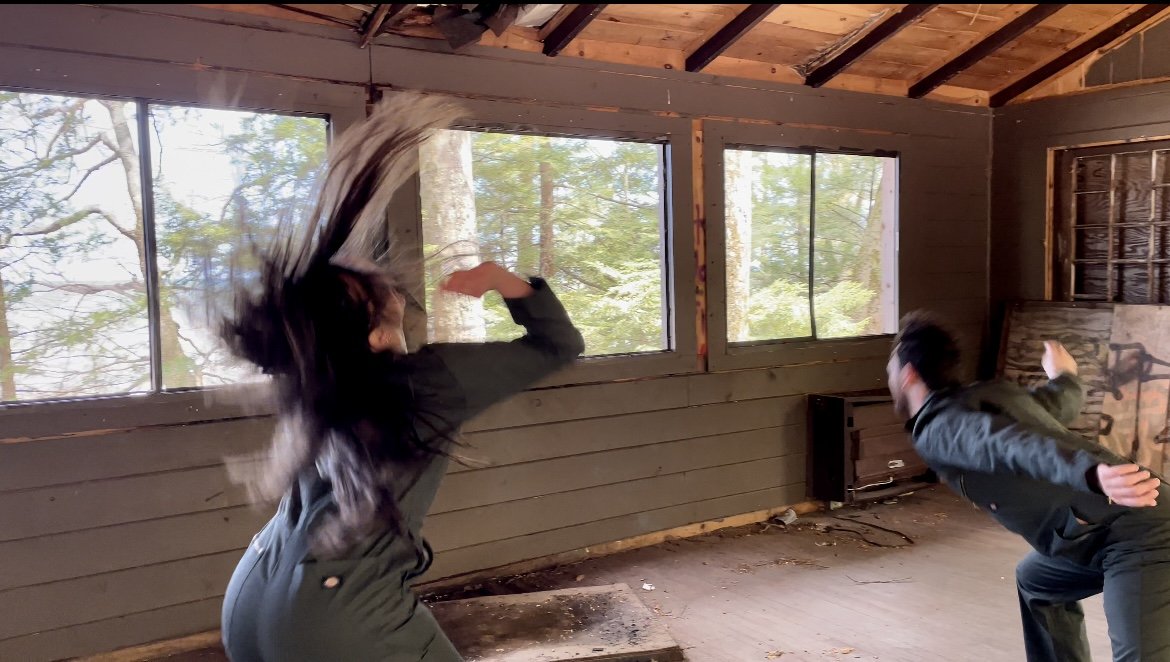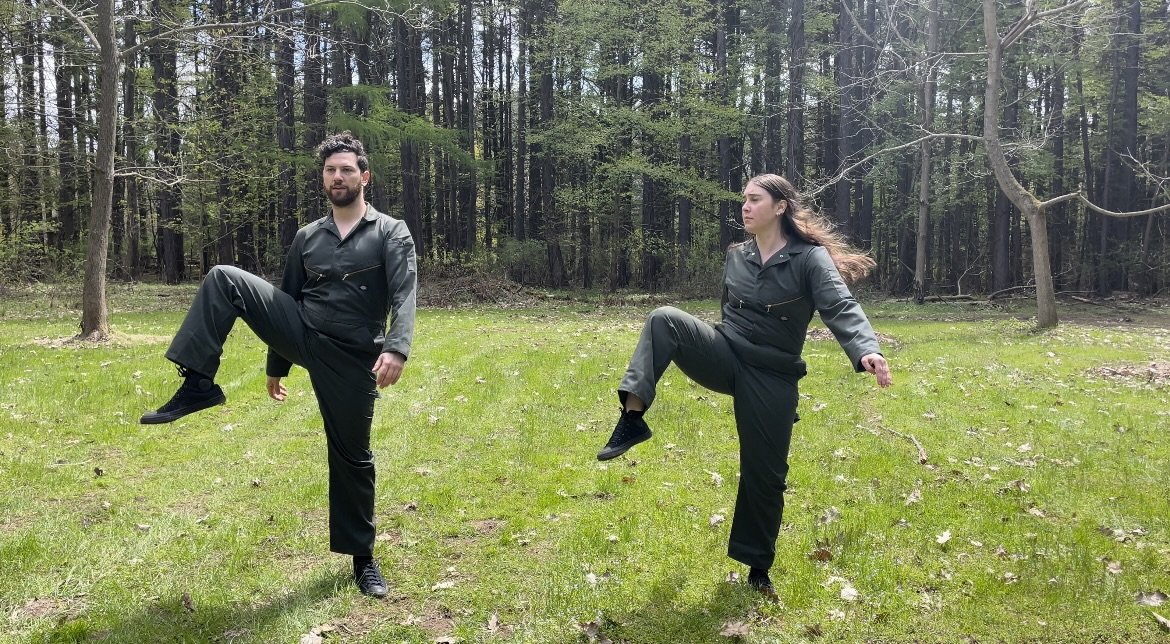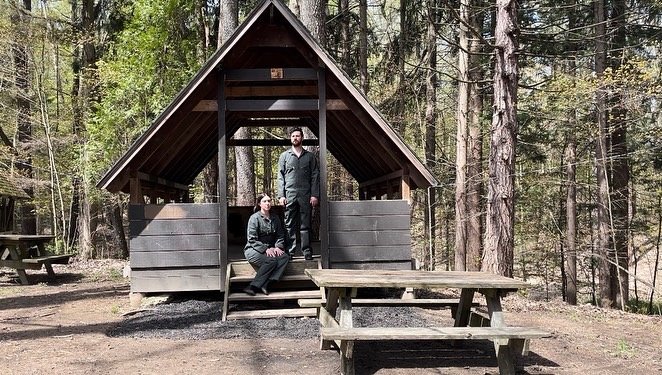UNCONVENTIONAL DANCE: Summer Camp
Camp Beechwood Sodus, NY
June 3rd, 2022
Directed, edited, & performed by Nattie Trogdon + Hollis Bartlett
Cinematography, additional direction & singing of “Linger” by Tara Hemmer
Filmed on the the unceded homelands of the Seneca and Haudenosaunee tribal nations.
Late in the summer when the air is dry and the smell of pine trees fills the air, I’m transported back to Camp Napowan and those Lord of the Flies -esque summers of my youth. A three hour drive with my Boy Scout troop took me to an entirely different world. We left behind the suburban sprawl for a few magical and wild weeks in the woods.
There was a rhythm and ritual to our time at camp; it always began with a swim test in the lake and a huge bonfire for the whole camp with skits and songs to welcome us, and usually ended with some sort of competition- a scavenger hunt, relay race, or a test of our skills learned that summer. We were supervised just enough to evade total chaos but given the freedom to explore and run through the woods, along with the tools to safely navigate our surroundings. Our days were spent studying for various merit badges, whittling pointy sticks and as mischievous youth - trying to light anything and everything on fire. As I grew older the skills we learned at camp got more advanced; knot tying and lashing, first aid, building shelters, navigating with both a compass and the stars, wilderness survival, setting traps and shooting guns and arrows. I learned basic survival skills - how to identify plants (avoiding poison ivy at all costs), how use a pocket knife and a hatchet, and how to build a fire. I also learned about friendship, and how to care for others, to always be vigilant and notice signs of danger in the wild.
It was a time to unplug from our mundane suburban lives and embrace our wildness and return to nature. As a young boy each summer was like living inside my favorite elementary school novel- Hatchet by Gary Paulsen. But as I grew older and stepped away from my Boy Scout days, I realized that although my memories of this time were pure and magical - the reality was a facade.
The portrayal of nature for the majority of summer camps in the U.S. is a Disneyfication of nature - prepackaged westernized commercialism for consumption. The Boy Scouts organization itself is steeped in heteronormative American propaganda. The Scout Oath - On my honor I will do my best to do my duty to God and my country and to obey the Scout Law; to help other people at all times; to keep myself physically strong, mentally awake, and morally straight. - is dripping in white, straight, able-bodied and masculine Christian hierarchy.
There was an omnipresent racist stereotype of native peoples throughout camp. Every bonfire included a white man in a headdress sharing “wisdom” or “lore”, and there were workshops teaching native crafts, as well as appropriated iconography spread throughout the camp. The indoctrination of gender roles was also heavy handed. Awards reinforced value systems based on traditional male gender roles - ableist and patriarchal - and those who excelled at these were the kings of summer camp. With an ominous undertone of “boys will be boys” many of my fellow campers grew up with an unsettling adoration for violence and guns.
With more distance and understanding of myself, as I continue to unpack and at times unlearn my upbringing, I’ve realized that much of who I am and the spaces that have shaped me have a duality or a spectrum. I hold dear the magical memories of my summer camp days that have helped mold the prepared adult I am today, and also acknowledge the toxic “American” conditioning that is perpetuated in these vulnerable youth spaces.
“These ephemeral spaces feel connected to the ephemerality of dance - faint traces of our collective past filled with complex histories.”
Camp Beechwood was founded by the Girl Scouts of America in 1929 on a 150-acre piece of land on the shores of Lake Ontario in Sodus, NY. For nearly 70 years, thousands of Girl Scouts from New York State spent their summers at Camp Beechwood. It featured a large beach on the lake as well as an Olympic-sized pool.
Before the arrival of European colonizers, the land that Camp Beechwood occupies was home to the People of the Great Hill the Seneca or Onondowahgah- members of the Haudenosaunee Confederacy. This confederacy is the oldest participatory democracy on Earth, and their constitution is believed to be a model for the American Constitution.
Beechwood closed in the mid-1990s due to declining attendance and increasing taxes - a fate my beloved Camp Napowan shared. The town of Sodus has turned Camp Beechwood into a public park opening up the land for camping, hiking and access to Lake Ontario. During our time in this haunting place, it was evident the decaying structures of the once thriving summer camp were meeting their final demise. A large yellow bulldozer sat ominously at the parks entrance - looming its power over the land. All traces of the Olympic sized swimming pool had been removed, as well as the chef’s cabin and the great mess hall and nothing but their large concrete slabs riddled with graffiti remained as artifacts of a happier time. The cliffs and beach which made Camp Beechwood a pristine spot for summer time adventuring are eroding away. The roaring waters of Lake Ontario consuming the land and pulling it into its great depths. A fate that is unfortunately common these days - land disappearing due to the climate catastrophe, colonization and from centuries of greed and hoarding by American corporate conglomerates.
Even so, there is something special about visiting these abandoned spaces before they disappear. These ephemeral spaces feel connected to the ephemerality of dance - faint traces of our collective past filled with complex histories. It’s exciting to reignite them with our energy and memories and lineages, and capture a bit of their stories with these films. Loss in all of its facets smolders in our souls like the embers of a campfire, but somehow these spaces have the ability to hold our loss and grief- and it is up to us to decide how we learn from our pasts and forge a new path forward.
- Hollis











